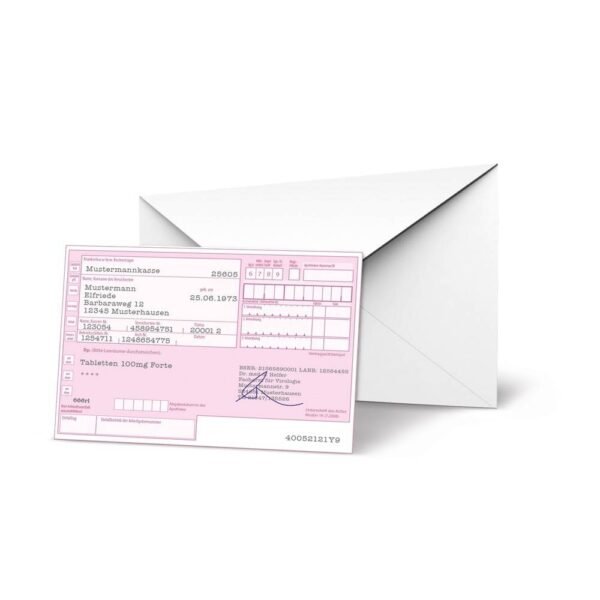indication
The drug is a water tablet (diuretic).
The medicine is used for:
Fluid buildup in tissues (edema) due to heart or liver disease
Fluid buildup in tissues (edema) due to kidney disease (in nephrotic syndrome [protein loss, lipid abnormalities, and water retention], treatment of the underlying disorder is a priority)
Fluid buildup in tissues (edema) as a result of burns
high blood pressure (arterial hypertension)
contraindication
The drug should not be taken
if you are allergic to furosemide, sulfonamides (possible cross-allergy with furosemide), or any of the other ingredients of this medicine
with kidney failure with insufficient urine output (anuria)
with liver failure with impaired consciousness (coma and hepatic precoma)
with severe potassium deficiency
with severe sodium deficiency
with a reduced volume of circulating blood (hypovolemia) or a lack of water in the body (dehydration)
if you are breastfeeding
Dosage of Furosemide AbZ 40 mg tablets
Always take this medicine exactly as your doctor has told you. Check with your doctor or pharmacist if you are not sure.
The dosage should be determined individually, especially depending on the success of the treatment. The lowest dose that achieves the desired effect should always be used.
The recommended dose for adults is
Fluid buildup in tissues (edema) due to heart or liver disease:
As a rule, adults initially take 1 tablet once (equivalent to 40 mg of furosemide). In the absence of satisfactory urination, a single dose can be doubled to 2 tablets (corresponding to 80 mg of furosemide) after 6 hours. If urinary excretion is still insufficient, another 4 tablets (corresponding to 160 mg of furosemide) can be administered after another 6 hours. If necessary, initial doses of furosemide greater than 200 mg can be used in exceptional cases with careful clinical observation.
The daily maintenance dose is usually 1-2 tablets (equivalent to 40-80 mg furosemide).
Weight loss caused by increased urination should not exceed 1 kg / day.
Fluid buildup in tissues (edema) due to kidney disease:
As a rule, adults initially take 1 tablet once in the morning (equivalent to 40 mg of furosemide). In the absence of satisfactory urination, a single dose can be doubled to 2 tablets (corresponding to 80 mg of furosemide) after 6 hours. If urinary excretion is still insufficient, another 4 tablets (corresponding to 160 mg of furosemide) can be administered after another 6 hours. If necessary, initial doses of furosemide greater than 200 mg can be used in exceptional cases with careful clinical observation.
The daily maintenance dose is usually 1-2 tablets (equivalent to 40-80 mg furosemide).
Weight loss caused by increased urination should not exceed 1 kg / day.
In the case of nephrotic syndrome, the dosage should be observed carefully due to the risk of increased side effects.
Fluid buildup in tissues (edema) due to burns:
The daily and / or single dose can be from 1 to 2 1/2 tablets (equivalent to 40-100 mg of furosemide), in exceptional cases with impaired renal function up to 6 tablets (equivalent to 240 mg of furosemide). Before using the drug, it is necessary to compensate for the lack of fluid in the vessels.High blood pressure (arterial hypertension):
Usually once a day, 1 tablet (equivalent to 40 mg of furosemide) alone or in combination with other drugs.
Application in children:
Children usually receive 1 (to 2) mg of furosemide per kg of body weight per day, up to a maximum of 40 mg of furosemide per day.
duration of use
The duration of use is determined by the attending physician. It depends on the type and severity of the disease.
If you take more than you should
If you suspect an overdose of large amounts of the drug, you should immediately inform your doctor. Depending on the severity of the overdose, the doctor may decide on any necessary measures.
Signs of acute or chronic overdose depend on the degree of salt and fluid loss.
An overdose can lead to a decrease in blood pressure and circulatory disorders when moving from a lying position to a standing position, electrolyte disturbances (decrease in potassium, sodium and chloride levels) or an increase in blood pH (alkalosis).
Severe fluid loss can lead to a lack of water in the body and, as a result of a decrease in the amount of circulating blood, to circulatory collapse and thickening of the blood (hemoconcentration) with a tendency to thrombosis.
The rapid loss of water and electrolytes can cause mental confusion.
If you forget to take a dose
Do not take a double dose to make up for a missed dose.
If you stop taking it
You should not interrupt your treatment with this medicine or stop it prematurely without a doctor’s order, otherwise you will jeopardize the success of the treatment.
If you have any further questions on the use of this medicine, ask your doctor or pharmacist.pregnancy
If you are pregnant or breastfeeding, think you may be pregnant, or are planning to have a baby, ask your doctor or pharmacist for advice before taking this medicine.
pregnancy
You should only use this medicine during pregnancy if your doctor considers it absolutely necessary, as the active ingredient furosemide crosses the placenta.
lactation
Furosemide is excreted in breast milk and inhibits the production of breast milk. Therefore, you should not be treated with this drug if you are breastfeeding. You may need to wean.
Buy Furosemid
Price Furosemid
Цена Фуросемид
Купить Фуросемид
Acheter Furosemid
Prix Furosemid
Comprar Furosemid
Precio Furosemid
Furosemid (Furosemid), 40mg, 50
€27.98
The medicine is used for
accumulation of fluid in tissues.
Description
Additional information
Shipping & Delivery
Related products
LONOLOX 10MG 100 Stk.(Minoxidil)
€332.40












